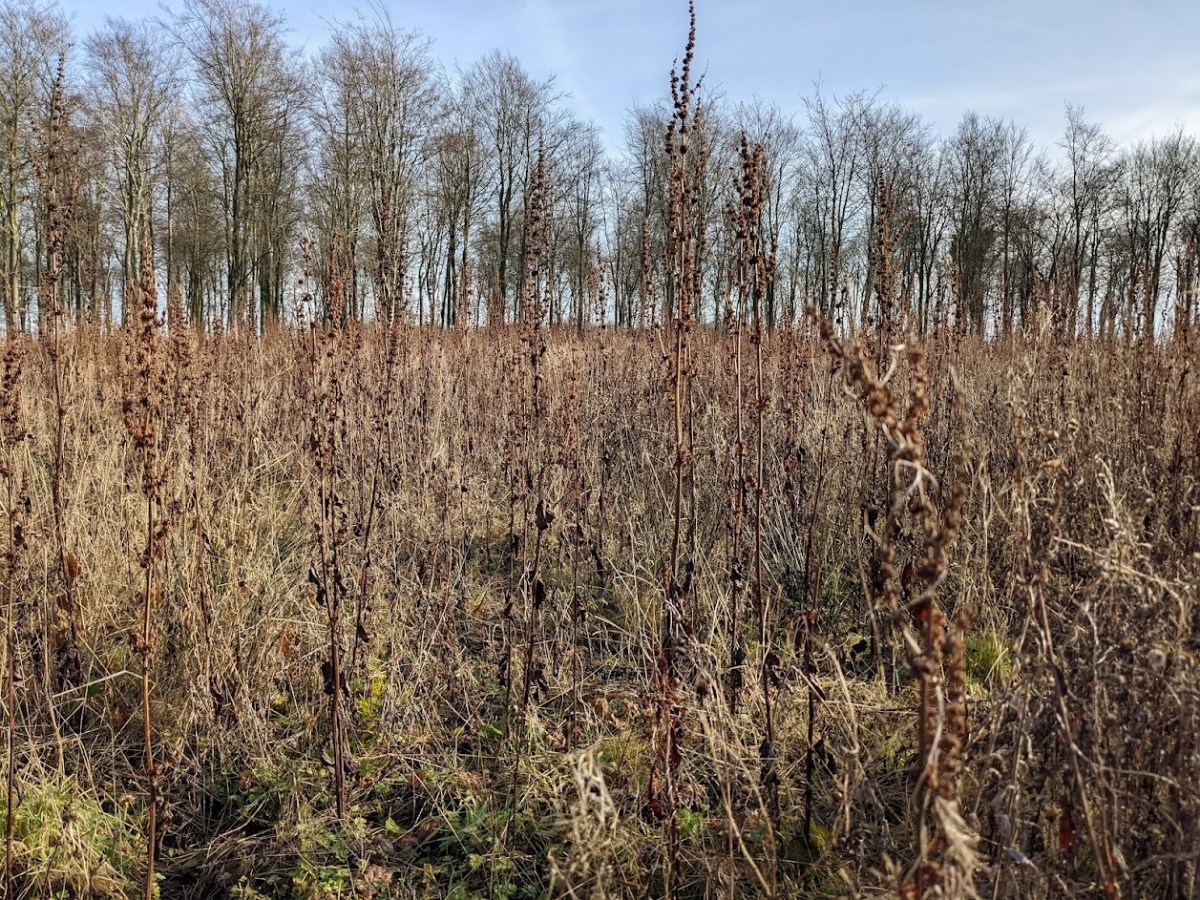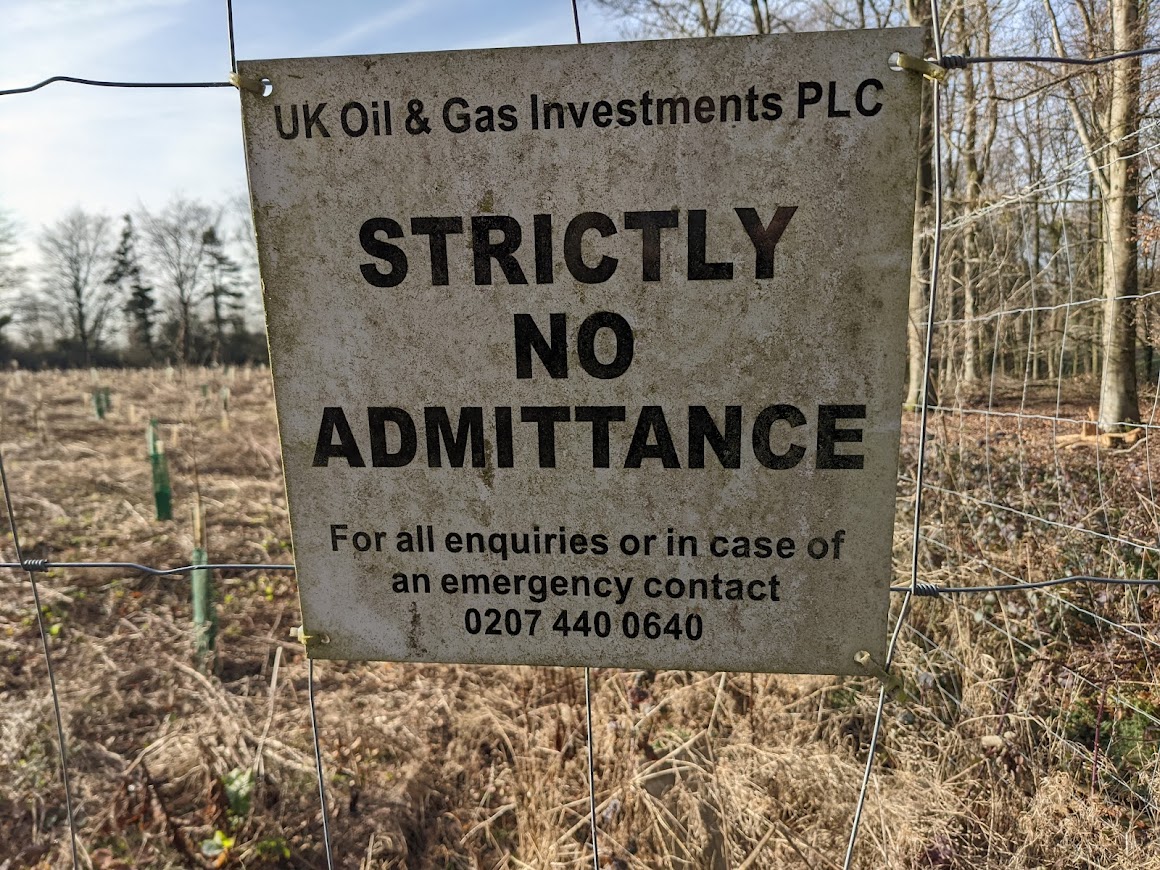A tree planting scheme on the site of a former oil site in the South Downs National Park has failed.

UK Oil & Gas plc (UKOG) said it planted 2,000 trees and shrubs in 2020 at the Markwells Wood site, north west of Chichester.
But two years on, most of the saplings have died and much of the site is overgrown.
National park officials have now ordered UKOG to replant in the next few weeks. And local people have asked for soil sampling to check whether the site is contaminated.
The Markwells Wood site is in an area of ancient woodland and tree planting was a key part of the restoration work required by the site’s planning permission. Another condition imposed a five-year aftercare programme to ensure restoration was successful.
A spokesperson for the South Downs National Park Authority said:
“Our officers have checked the site and many of the whips have failed, as can happen with replanting schemes.
“We have informed the operator and they are undertaking the replanting this season.
“The site will continue to be monitored by the Authority’s Minerals and Waste Team as part of the agreed aftercare scheme.”

A 1km access track to Markwells Wood has been removed and is no longer visible. But on the 0.5ha well pad, many of the plastic tree guards contain just the support stake or dead saplings.
Markwells Wood Watch, a group which campaigned against oil operations at the site, has been monitoring the restoration.
A spokesperson for the group told DrillOrDrop:
“We are concerned that the replanting of Markwells Wood has failed. The most successful plants on the site are weeds and we fear that the soil could have been contaminated by the drilling activity. This is why we have asked for soil tests to be carried out before any new trees are planted.
“This is disappointing for two reasons; UKOG has again demonstrated a lack of environmental credentials and this failure has further delayed much needed carbon capture”.
The tree planting was carried out in January 2020. This was 18 months after the South Downs National Park Authority issued an enforcement notice to UKOG to abandon and restore Markwells Wood.
The Markwells Wood Watch spokesperson said:
“If our experience is typical, there appears to be no effective, independent monitoring of the decommissioning of onshore wells in the UK.
“The Environment Agency and the Health and Safety Executive rely on the contractor to do a proper job. This is not good enough, especially in an environmentally sensitive area such as Markwells Wood, which sits above an aquifer that is the source of fresh water for many thousands of people.”
DrillOrDrop invited UKOG to comment but it did not respond.

The tree planting failure is the latest stage in a drawn-out process of decommissioning Markwells Wood.
The site was first granted planning permission in 2009. A single well was drilled in November 2010 but never went into production. Planning permission was later extended in 2012, 2013 and 2015.
In September 2016, 10 days before the most recent permission expired, UKOG submitted an application for further drilling and 20 years of hydrocarbon production.
This application attracted a large number of objections, including from the Environment Agency and Portsmouth Water, which said the proposals could pose an unacceptable risk to groundwater.
In May 2017, UKOG withdrew the application. It promised scaled-back proposals but lost its access right to the site.
Nearly two years later, the company confirmed in a statement to investors it had pulled out of Markwells Wood.
It told the South Downs National Park that the well had been plugged and abandoned on 14 January 2019.
But another 12 months went by before the tree planting work began. The replacement planting will now be three years after plugging and abandonment.
Categories: Regulation, slider

Tree planting schemes of this nature often fail and usually nothing is done about it by the local planning authority. The difference here is that it is in National Park managed by a separate body that has a genuine interest in the health of the land. The important thing now is that the 5 year care plan period needs to be re-started in order that UKOG are held to account on their reinstatement responsibilities.
This raises a couple of interesting issues. Since the Tories came to power in 2010, the EA’s budget (and therefore staff numbers) have been massively cut back. Probably justifiably to some degree, but not to the point where it is incapable and perhaps unwilling to deliver it’s most basic remit of environmental protection. You only have to look at the appalling mess that our rivers and coastal waters are in from massive and continued illegal sewage discharges. One of the biggest problems is self regulation by these private companies, with little or no oversight from the EA and often poor standards imposed on them from the outset. Why would we have ever believed that fracking companies would have been any different in jumping over their very low bar? We didn’t, although the usual commentators will no doubt subsequently tell us otherwise (see below).
On another issue, newly planted trees need a fair degree of care and attention, particularly in their first couple of years and even more so in dry locations. They clearly didn’t get that care in this case. It highlights the common greenwashing principles of carbon offsetting by certain companies, with tree planting appearing to be the mantra to cover up all manner of over-consumption elsewhere. I suppose if it’s semi greenwashing by planting serried rows of conifers that are destined to be a cash crop in a couple of decades, someone will take a little more care though.
Except the South Downs National Park Authority is the agency involved, Mike!
I was making a couple of general points: The dangers of self regulation and greenwashing by tree planting with little or no aftercare. Other than it being positive that the NP followed up diligently on their planning conditions, their involvement is irrelevant to my post.
No worries. Good to see stuff is happy to grow there and bring an amount of biodiversity nor present before maybe. The local plants seem happy to colonise it although the trees have struggled. It is a shame that there is no data on tree survival, in the rush to berate UKOG it seems to have been missed and no mention that the survival of trees is not a decommissioning activity for the HSE.
Maybe it is time for a list of nature reserves up here in Lincs / Notts that are there because of past extractive industries.
Here is one which is the old Eakring Oilfield, drilled when environmental protection was – well, no really there (virtually non of the restrictions there are now). It is a great place to visit.
https://www.nottinghamshirewildlife.org/nature-reserves/dukes-wood-nature-reserve
The question that arises, is why are the planted saplings dying? What toxins are in the soil if any? Are there the correct levels of nutrients in the soil? Were the wells capped properly? Are any toxins in the soil due to the activities on the site location? Is there water supply contamination? If soil and the saplings were imported for the purpose, where did they come from? And how was it treated while in storage?
It has been long known by ecologists and environmental engineers, that the new sapling planting has to be of a compatible species with the location, with the soil and conditions in which it will be grown. Have there been toxicity tests done? What is the ph of the soil? What are the soil constituents? What has been done, if anything, so that the young saplings are regularly tended watered and protected?
This appears to be the typical industry attitude, of just plant anything anywhere, and hope to god it actually survives? That is nowhere near sufficient to the task.
What a waste of plant life and expense for saplings and plants to die because of the lack of care and tending? How much was wasted in this effort? Both in number of saplings and money?
Phil C
The report is short of the information you seek. Were it provided then I am sure we could come to a more rounded conclusion.
Your conclusion is …..
This appears to be the typical industry attitude, of just plant anything anywhere, and hope to god it actually survives? That is nowhere near sufficient to the task.
…..
I have not come across that approach in the coal industry or oil and gas industry, but then I do not live in the weald, and have never worked for UKOG.
Typically the planting plan would be done by ecologists, the planting by a company that does such things and the soil would have been sampled. There are many pit tips and industrial sites which bear witness to the success of such plans.
I look forwards to more information on this issue from Drill or Drop, and a reply from UKOG who would have all that information to hand ( as will the Park Authority and presumably Markwell’s Wood Watch?
Off to plant trees, as even up here deer, drought or too much water is an issue even in those managed by organisations such as the Notts Wildlife Trust.
Hewes 62, your third to last paragraph is indeed the standard approach. It will be interesting to see what the reason is but it could well be that some have died due to tree diseases rampant across the south east. Perhaps, if that is the case, then species replanted may need to be adjusted.
Martin
Thanks – quite a few tree planting exercises fail, be it due to drought, rain disease and other pests. Nothing to do with oil companies, the EA, the HSE. That the Eakring oilfield has such a lush and luxuriant tree cover (with the odd old but of moss covered concrete) is a testament to the ability of nature to recover.
And this with wells capped from the 1940s onwards, dusters and producers at that.
For a leaking well ( a real capping failure – which is pretty evident) one can see that nature crowds in.
https://www.tripadvisor.co.uk/Attraction_Review-g1024697-d12422621-Reviews-Hardstoft_Oil_Well-Tibshelf_Derbyshire_England.html